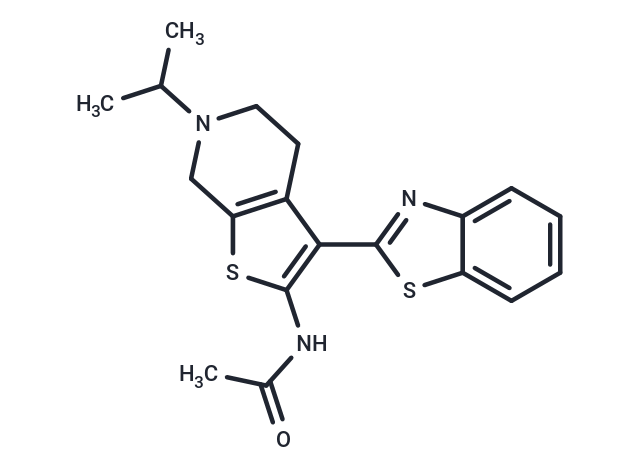Shopping Cart
- Remove All
 Your shopping cart is currently empty
Your shopping cart is currently empty

APE1-IN-1 is a potent inhibitor of purine/pyrimidine endonuclease 1 (APE1) that crosses the blood-brain barrier, exhibits potential antitumor activity, and enhances the cytotoxicity of the alkylating agent [methyl methanesulfonate] on cancer cells.

| Pack Size | Price | Availability | Quantity |
|---|---|---|---|
| 1 mg | $62 | In Stock |
| Description | APE1-IN-1 is a potent inhibitor of purine/pyrimidine endonuclease 1 (APE1) that crosses the blood-brain barrier, exhibits potential antitumor activity, and enhances the cytotoxicity of the alkylating agent [methyl methanesulfonate] on cancer cells. |
| Targets&IC50 | qHTS assay:2 μM, Radiotracer incision assay:12 μM |
| In vitro | In the qHTS assay, APE1-IN-1 (compound 3) displays an IC50 of 2 μM, while in a radiotracer incision assay (RIA), it exhibits an IC50 of 12 μM[1]. In a dose-dependent manner, APE1-IN-1 (at concentrations of 0, 1, 3, 10, 30, or 100 μM for 15 minutes) inhibits AP site incision in HeLa whole cell extracts[1]. Furthermore, APE1-IN-1 (at concentrations ranging from 5 to 30 μM for 24 hours) demonstrates cytotoxic activity against HeLa cells and enhances the activity of methyl methansulfonate and Temozolomide[1]. |
| In vivo | Administered at a single dosage of 30 mpk via intraperitoneal injection, APE1-IN-1 demonstrates favorable pharmacokinetic properties[1]. |
| Molecular Weight | 371.52 |
| Formula | C19H21N3OS2 |
| Cas No. | 524708-03-0 |
| Smiles | CC(C)N1CCc2c(C1)sc(NC(C)=O)c2-c1nc2ccccc2s1 |
| Storage | store at low temperature | Powder: -20°C for 3 years | In solvent: -80°C for 1 year | Shipping with blue ice. | |||||||||||||||||||||||||
| Solubility Information | DMSO: 10 mg/mL (26.92 mM), Sonication is recommended. | |||||||||||||||||||||||||
Solution Preparation Table | ||||||||||||||||||||||||||
DMSO
| ||||||||||||||||||||||||||

Copyright © 2015-2025 TargetMol Chemicals Inc. All Rights Reserved.